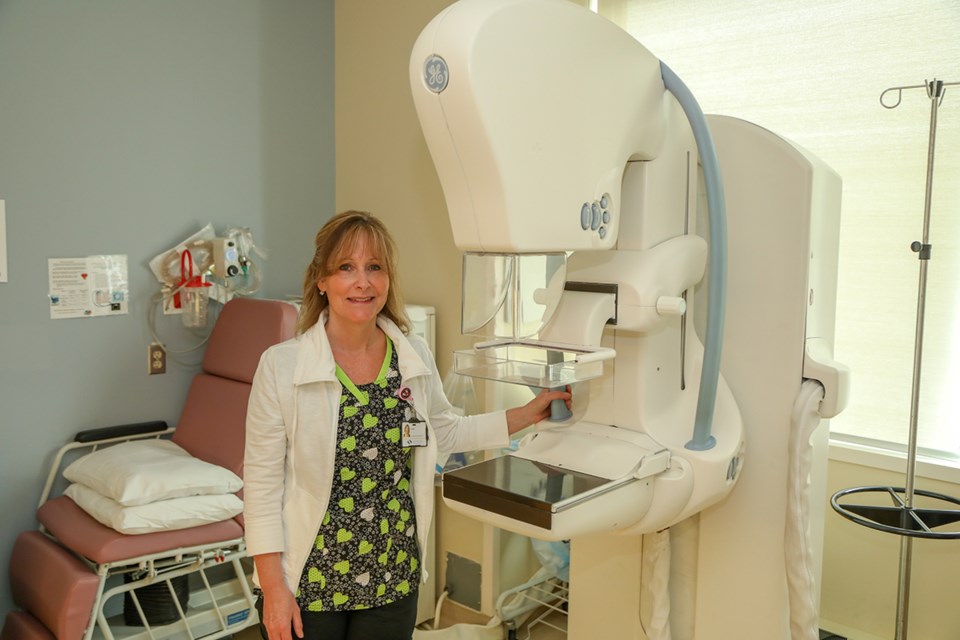April is Daffodil Month, the Cancer Society’s annual campaign to raise awareness and funds for cancer research - and May is traditionally the month of the ‘Mammothon,’ the Ontario Breast Screening Program’s annual campaign to encourage women to have a diagnostic test. The Mammothon may be temporarily on hold, due to COVID-19 concerns, but the message is still clear…
The statistics say that 1 in 2 Canadians will be diagnosed with cancer sometime in their lifetime.
For women, the top cancer diagnosis is breast cancer: one in eight women will battle the disease.
I was faced with the possibility of being one of those statistics, at the start of this year.
The routine mammogram on Dec. 21, 2020 was supposed to be my last regularly scheduled mammogram. Women can self-refer up to age 74 in the OBSP program. At the age of 75, women can remain in the OBSP program as long as they obtain a requisition from their primary care practitioner
The diagnostic procedure flagged an anomaly. I was called back for a second mammogram and an ultrasound on Jan. 6 – and then for a biopsy on Jan. 22.
It wasn’t entirely a surprise. Doing research, I already knew that in the past three decades, from 1981 to 2016, the province of Ontario has seen a 175 percent increase in the incidence of cancer.
Cancer Care Ontario has attributed the increase to an aging population, a growing population, improved diagnostics, and to a lesser degree, changes in cancer risks.
I also knew that the median age for a cancer diagnosis was 67, and that the ‘danger zone’ for development and detection of cancer is generally between the ages of 60 and 79. Fifty-two percent of all new cases are in that age group.
I was there, right in the danger zone.
And I had another reason to be on the alert: a family history of breast cancer. My mother was diagnosed with and successfully battled the disease.
Within days of the second mammogram, I was contacted by both my family doctor and by Southlake Regional Health Centre, to set up the biopsy. Both were caring and reassuring – not that I was in need of reassurance at that point.
I was aware of the stats, my family history, but also the fact that new diagnostic techniques had caught the potential cancer in its earliest stage, and that new treatment options have improved survival rates. According to the Canadian Cancer Society, the five year net survival for women diagnosed with breast cancer stands at 88 percent; that goes up, the earlier the cancer is diagnosed.
For women diagnosed with Stage 1, the five year survival rate is 100 percent – and in a year when a global pandemic continued to rage, those seemed like pretty good odds.
The biopsy took place on Jan. 22, at Southlake’s Medical Arts Building. It was a matter of freezing a locale on the breast, making a tiny incision, and inserting a needle to remove tissue from the ‘anomaly.’
A tiny titanium clip was then inserted to mark the location of the sample. I was told that if the tissue turned out to be malignant, the clip would be removed at the time of surgery; if it was benign, the clip would remain in place – but would not trigger metal detectors at malls or airports.
After a ‘gentle’ mammogram, to mark the location of the clip, that was it: a minimum amount of time, a minimum amount of discomfort. The most stressful part was the 10-day wait for results.
Actually, I didn’t even have to wait the full 10 days. My caring family physician called me in four: the results were negative, the “anomaly” was benign and non-cancerous.
A follow-up in Diagnostic Imaging confirmed the good news, and that was it - for now. I was sent home, with advice to be aware of the risk factors linked to cancer: alcohol consumption, smoking, physical inactivity, obesity and overweight, a diet low in fresh vegetables and fruit. I was advised to continue to have regular mammograms.
And that’s the key. The mammogram has become the front line in early detection, and early detection means less invasive treatment and better chances of survival.
Any woman who has been putting off having a mammogram should make an appointment as soon as possible. It took me years to overcome the very painful experience of a previous mammogram, but the machines and the techniques have changed. A mammogram is no longer the agony and indignity it once was.
And it can be a life-saver.
According to Southlake Regional Health Centre, women between the age of 50 and 74 do not need a referral to be screened for breast cancer. The same is true for trans men, who still have breast tissue.
For those who are under the age of 50 or over the age of 74, a referral from a family doctor or nurse practitioner is required.
Southlake is an Ontario Breast Screening Program (OBSP) site. There are 31 OBSP sites in Central Region, which includes South Simcoe, York Region and North York. To find the closest OBSP site, call 1-800-668-9304 or click here.
If you are between the ages of 50 and 74 and wish to book a mammogram at Southlake, call 905-895-4521 ext. 2665 to schedule.
The latest information about COVID-19 screening protocols and coming for your appointment will be posted on the Southlake website; click here.
Kathryn Perrier, manager of corporate communications at Southlake, notes: “As we deal with the rising number of COVID-19 patients in our community and across the province, Southlake follows the Ministry of Health’s direction on delaying or cancelling any procedures and will post this information on our website.”



